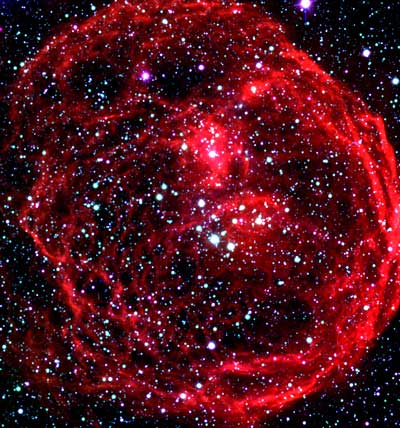Explanation: Massive stars -- upwards of tens of times the mass of the Sun - profoundly affect their galactic environment. Churning and mixing the clouds of gas and dust between the stars, they leave their mark on the compositions and locations of future generations of stars and star systems. Dramatic evidence of this is illustrated in our neighboring galaxy, the Large Magellanic Cloud (LMC), by the above ring shaped nebula, Henize 70 (also known as N70 and DEM301). It is actually a luminous "superbubble" of interstellar gas about 300 light-years in diameter, blown by winds from hot, massive stars and supernova explosions, its interior filled with tenuous hot expanding gas. These superbubbles offer astronomers a chance to explore this crucial connection between the lifecycles of stars and the evolution of galaxies.
1999 2000 2001 2002 2003 2004 2005 2006 2007 2008 2009 2010 2011 2012 2013 2014 2015 2016 2017 2018 2019 2020 2021 2022 2023 2024 2025 |
Yanvar' Fevral' Mart Aprel' Mai Iyun' Iyul' Avgust Sentyabr' Oktyabr' Noyabr' Dekabr' |
NASA Web Site Statements, Warnings, and Disclaimers
NASA Official: Jay Norris. Specific rights apply.
A service of: LHEA at NASA / GSFC
& Michigan Tech. U.
|
Publikacii s klyuchevymi slovami:
LMC - wind - superbubble - zvezdnyi veter - vspyshki - vzryvy sverhnovyh - Bol'shoe Magellanovo Oblako
Publikacii so slovami: LMC - wind - superbubble - zvezdnyi veter - vspyshki - vzryvy sverhnovyh - Bol'shoe Magellanovo Oblako | |
Sm. takzhe:
Vse publikacii na tu zhe temu >> | |
